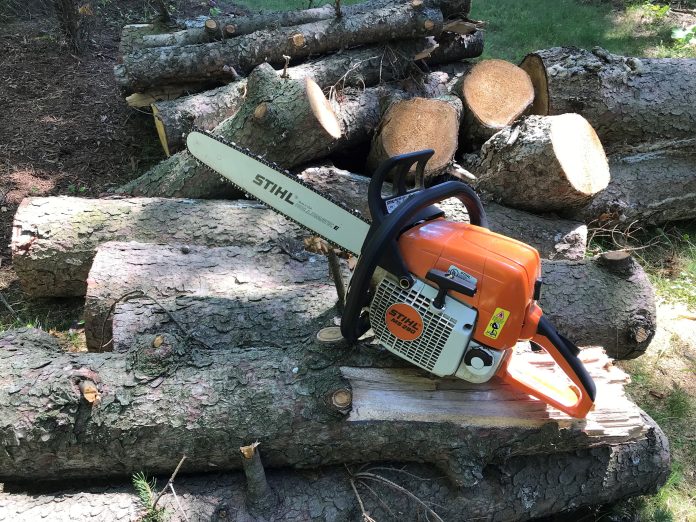
Last week, we discussed the importance of late summer pruning of trees, shrubs, evergreens, and perennial plants. But what tools are best for each job? Herein, your answers, from the smallest to the largest pruning jobs:
Hand pruning. Light pruning is best performed using a sharp, quality pair of hand pruners. These are light and useful for removing growth up to a centimetre in diameter, or about the thickness of your baby finger. Make sure your hand pruners are sharpened every time you use them, clean and lubricated with general purpose oil.
Loppers are large “hand pruners” that work on the same scissoring principle, using either bypass or anvil type cutting blades. The main difference is that loppers have long handles, sometimes with extensions that help you reach up to a metre into a tree or shrub to cut out mature woody stems. The long handles and heavier blades of loppers make cutting green branches up to 2.5 centimetres or an inch in diameter easy.
A pruning saw is different from any saw. Unlike the crosscut and rip saw, a pruning saw cuts on both the fore stroke and back stroke, cutting the work required to do the job in half. Unlike your camp saw, used for cutting small branches for building a campfire, a pruning saw is designed to cut green wood. You will find the difference striking. And the work of using a good, sharp pruning saw a joy compared to anything else.
Chain saw. Unless you have been trained on the proper and safe use of a chain saw, we recommend that you skip this. Removing one of your own limbs is never the idea behind a good pruning job. There are now some excellent rechargeable long handled chain saws that are light and relatively easy to use. Stihl makes an excellent rechargeable model. After all if the chain is several feet away from you, what can go wrong? Well, a limb might fall on your head. Which is another reason why signing up for a chain saw course, as Mark did, is a good idea. Landscape Ontario has an excellent one at https://horttrades.com/training.
Your pruning equipment does not end with the cutting tool. Here is a list of the other essentials to ensure a safe, effective job:
Heavy gloves. Say you miss cutting the limb of a tree and cut your finger instead. Do not laugh. Heavy leather gloves help to protect fingers and hands. If your gloves have a long cuff to protect your wrist and forearm, so much the better.
Goggles. Such an obvious choice. The saw dust created from limb removal overhead is one hazard to your eyes. So are the small branches of shrubs and trees as you reach into the plant to access the limb you wish to remove. Often, we just don’t see that little stem coming at us.
Long sleeves. Remember your forearm and wrist? Wearing a long-sleeved shirt is an especially good idea if you are working with evergreens like spruce or junipers, which have prickly foliage. Exposed forearms that contact junipers often suffer from “juniper rash”.
Steel toed boots. For all the limbs that crash to the ground from somewhere up in a tree, there is the potential for toe injury. Not to mention tripping on the roots of mature shrubs and trees while your attention is focused on the limbs above your head. Steel toed boots provide a level of confidence for the wearer that is hard to describe, and they aren’t always as clunky as the construction boots you likely have in mind. We like Blundstones. Let’s put it this way: when you know that the potential for personal injury is minimized, your confidence level goes up. You make smarter choices. Leave the flip flops on the deck.
If all of this sounds a little obvious, we give you credit for your risk-awareness. Unlike the rest of us, for whom this reminder can be very useful.
Mark Cullen is an expert gardener, author, broadcaster, tree advocate and Member of the Order of Canada. His son Ben is a fourth-generation urban gardener and graduate of University of Guelph and Dalhousie University in Halifax. Follow them at markcullen.com, @markcullengardening, and on Facebook.

